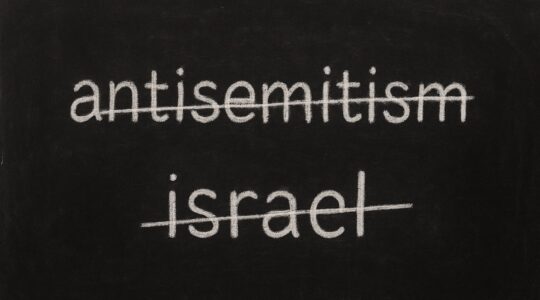NEW YORK (JTA) — Cardinal Kurt Koch, the Vatican’s key representative to Jews, is making his first visit to New York, home to the largest Jewish community outside of Israel. The cardinal, appointed president of the Vatican’s Commission for Religious Relations with the Jews in 2010, has an opportunity, together with Jewish leaders, to reflect on the state of Catholic-Jewish relations and aspirations for the future.
While in New York, Cardinal Koch will meet with, among others, the International Jewish Committee on Interreligious Consultations, or IJCIC. This coalition of Jewish organizations, recognized by the Vatican as the official consultative Jewish body for the advancement of Catholic-Jewish relations, was created in the aftermath of Nostra Aetate. That document of the Second Vatican Council (Vatican II, 1962-1965) changed the course of Catholic-Jewish history with its revolutionary statements rejecting the deicide charge against the Jews, decrying anti-Semitism and affirming the validity of God’s ongoing covenant with the Jewish people. In the post-Shoah era, the Church had begun to come to terms with its role in facilitating anti-Jewish animus that created a climate receptive to the horrors of the Holocaust.
American Jewish leaders played a critical role in ushering in these advances. With the destruction of European Jewry, the United States became the location where the largest number of Jews and Catholics lived side by side, with the added benefit of America’s ethos of religious freedom. The U.S. Conference of Catholic Bishops, or USCCB, led in expanding the vision of Nostra Aetate with detailed directions to clergy for its implementation.
One of the critical pre-Nostra Aetate meetings took place at the American Jewish Committee in New York on March 31, 1963. The Jewish Theological Seminary’s Rabbi Abraham Joshua Heschel, brought into the Vatican II process by his student, AJC’s Rabbi Marc Tanenbaum, met with Cardinal Augustin Bea, the Vatican’s senior ecumenical officer. Heschel’s impact on the final Nostra Aetate text is evident when one reads his memorandum, “On Improving Catholic-Jewish Relations,” that was presented to Cardinal Bea and his Vatican colleagues.
But it was Pope John Paul II, with his bold pronouncements and dramatic actions, who took Catholic-Jewish relations to the next level — the first visit by a pope to a synagogue, a pilgrimage to Auschwitz on bended knee, and a state visit to Israel where the pope placed his kvittel (prayer) in a crevice of the Western Wall. Pope Benedict XVI has followed in John Paul’s path, indicating clearly that his predecessor’s papacy was not to be the dramatic exception in Catholic-Jewish relations but rather the paradigm to be emulated. Perhaps this was made most clear when Benedict earlier this year published his second volume on the life of Jesus in which he elucidates that there is no basis in Scripture for the deicide charge.
True, there have been recent bumps in Catholic-Jewish relations, including: Benedict’s lifting the excommunication of the Society of Saint Pius X, among them the Holocaust-denying Bishop Richard Williamson; allowing Pope Pius XII’s beatification process to continue before the release of all the archives related to his Holocaust-era actions; and expanding the use of the Latin Mass that includes a controversial Easter-time prayer for the conversion of the Jews. Notwithstanding their headline-grabbing nature, these missteps should not prevent us from seeing the positive trajectory that Benedict has sustained and expanded, most notably with his state visit to Israel and his warm words at the Rome synagogue.
Cardinal Koch has an opportunity to send a message of continuity and progress as he arrives in New York, where New York Archbishop Timothy Dolan, who also is president of the USCCB, is a consistent and vocal champion of Catholic-Jewish relations.
But the cardinal also has assumed his role at a time of great transition for the Catholic Church. Developments not necessarily related to Catholic-Jewish relations may have a significant impact on their future evolution. Growing conservatism in Catholic ideology could cast a regressive shadow on the liberalism inherent in the progressive aftermath of Nostra Aetate. Demographic changes may diminish the positive emphasis on the Catholic-Jewish relationship as the numbers of adherents continue to grow in Africa and South America, home to far fewer Jews than in North America. The Church may come under increasing internal pressure to demonize and isolate Israel despite its six-decade pursuit of peace.
Ultimately, Church leaders like Cardinal Koch will be challenged to sustain the energy needed to educate a new generation of Catholic leadership that may be less familiar with or perhaps takes for granted the achievements of Nostra Aetate.
The history of the past 55 years gives us reason to be optimistic even as we know that our work is not done. The Jewish community should look forward to expanding its partnership with Cardinal Koch as we welcome him warmly to New York and the United States.
(Rabbi Noam E. Marans is the American Jewish Committee’s director of interreligious and intergroup relations.)
JTA has documented Jewish history in real-time for over a century. Keep our journalism strong by joining us in supporting independent, award-winning reporting.






